Osbert Bastani
Synthesizing Machine Learning Programs with PAC Guarantees via Statistical Sketching
Oct 11, 2021
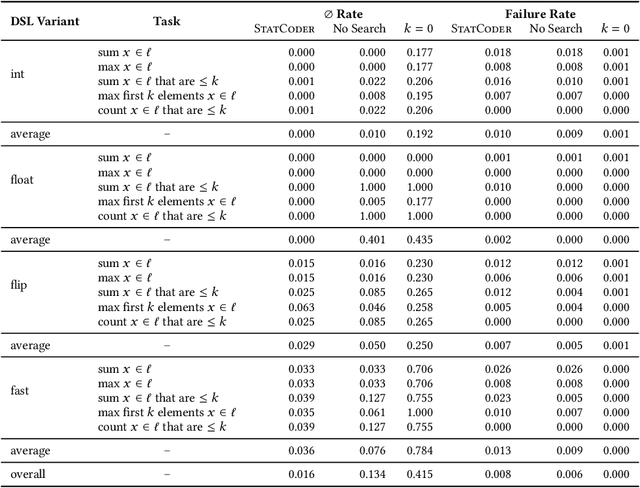
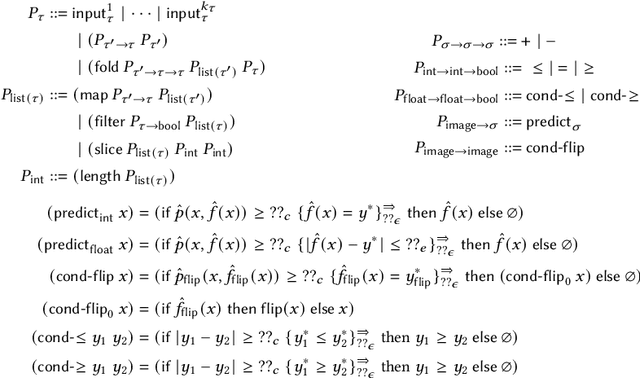

Abstract:We study the problem of synthesizing programs that include machine learning components such as deep neural networks (DNNs). We focus on statistical properties, which are properties expected to hold with high probability -- e.g., that an image classification model correctly identifies people in images with high probability. We propose novel algorithms for sketching and synthesizing such programs by leveraging ideas from statistical learning theory to provide statistical soundness guarantees. We evaluate our approach on synthesizing list processing programs that include DNN components used to process image inputs, as well as case studies on image classification and on precision medicine. Our results demonstrate that our approach can be used to synthesize programs with probabilistic guarantees.
Robust Generalization of Quadratic Neural Networks via Function Identification
Sep 22, 2021Abstract:A key challenge facing deep learning is that neural networks are often not robust to shifts in the underlying data distribution. We study this problem from the perspective of the statistical concept of parameter identification. Generalization bounds from learning theory often assume that the test distribution is close to the training distribution. In contrast, if we can identify the "true" parameters, then the model generalizes to arbitrary distribution shifts. However, neural networks are typically overparameterized, making parameter identification impossible. We show that for quadratic neural networks, we can identify the function represented by the model even though we cannot identify its parameters. Thus, we can obtain robust generalization bounds even in the overparameterized setting. We leverage this result to obtain new bounds for contextual bandits and transfer learning with quadratic neural networks. Overall, our results suggest that we can improve robustness of neural networks by designing models that can represent the true data generating process. In practice, the true data generating process is often very complex; thus, we study how our framework might connect to neural module networks, which are designed to break down complex tasks into compositions of simpler ones. We prove robust generalization bounds when individual neural modules are identifiable.
Improving Human Decision-Making with Machine Learning
Aug 31, 2021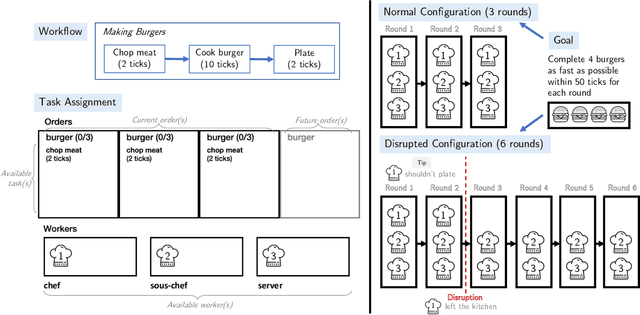

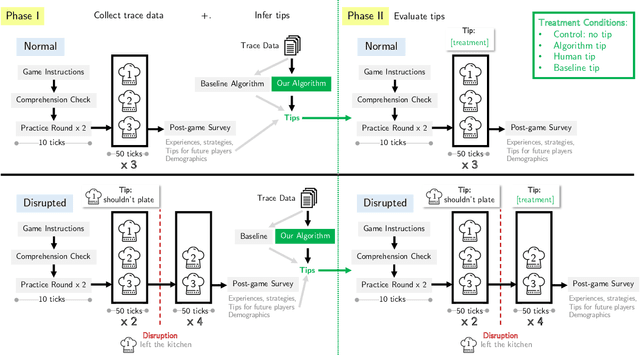

Abstract:A key aspect of human intelligence is their ability to convey their knowledge to others in succinct forms. However, despite their predictive power, current machine learning models are largely blackboxes, making it difficult for humans to extract useful insights. Focusing on sequential decision-making, we design a novel machine learning algorithm that conveys its insights to humans in the form of interpretable "tips". Our algorithm selects the tip that best bridges the gap in performance between human users and the optimal policy. We evaluate our approach through a series of randomized controlled user studies where participants manage a virtual kitchen. Our experiments show that the tips generated by our algorithm can significantly improve human performance relative to intuitive baselines. In addition, we discuss a number of empirical insights that can help inform the design of algorithms intended for human-AI interfaces. For instance, we find evidence that participants do not simply blindly follow our tips; instead, they combine them with their own experience to discover additional strategies for improving performance.
Conservative Offline Distributional Reinforcement Learning
Jul 12, 2021

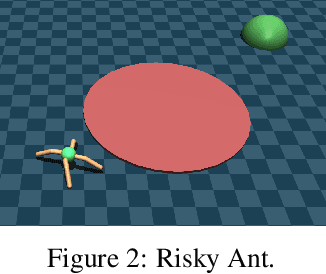

Abstract:Many reinforcement learning (RL) problems in practice are offline, learning purely from observational data. A key challenge is how to ensure the learned policy is safe, which requires quantifying the risk associated with different actions. In the online setting, distributional RL algorithms do so by learning the distribution over returns (i.e., cumulative rewards) instead of the expected return; beyond quantifying risk, they have also been shown to learn better representations for planning. We propose Conservative Offline Distributional Actor Critic (CODAC), an offline RL algorithm suitable for both risk-neutral and risk-averse domains. CODAC adapts distributional RL to the offline setting by penalizing the predicted quantiles of the return for out-of-distribution actions. We prove that CODAC learns a conservative return distribution -- in particular, for finite MDPs, CODAC converges to an uniform lower bound on the quantiles of the return distribution; our proof relies on a novel analysis of the distributional Bellman operator. In our experiments, on two challenging robot navigation tasks, CODAC successfully learns risk-averse policies using offline data collected purely from risk-neutral agents. Furthermore, CODAC is state-of-the-art on the D4RL MuJoCo benchmark in terms of both expected and risk-sensitive performance.
Compositional Reinforcement Learning from Logical Specifications
Jun 25, 2021
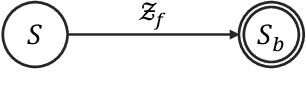
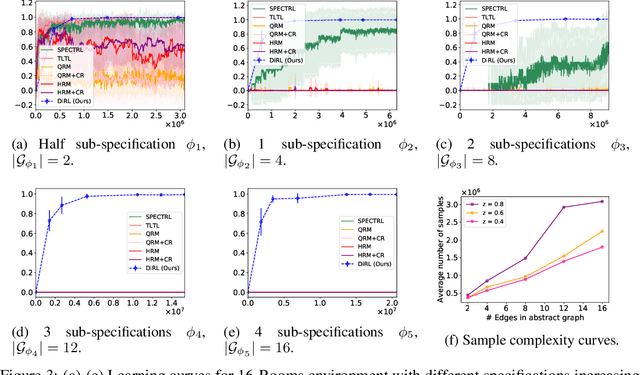

Abstract:We study the problem of learning control policies for complex tasks given by logical specifications. Recent approaches automatically generate a reward function from a given specification and use a suitable reinforcement learning algorithm to learn a policy that maximizes the expected reward. These approaches, however, scale poorly to complex tasks that require high-level planning. In this work, we develop a compositional learning approach, called DiRL, that interleaves high-level planning and reinforcement learning. First, DiRL encodes the specification as an abstract graph; intuitively, vertices and edges of the graph correspond to regions of the state space and simpler sub-tasks, respectively. Our approach then incorporates reinforcement learning to learn neural network policies for each edge (sub-task) within a Dijkstra-style planning algorithm to compute a high-level plan in the graph. An evaluation of the proposed approach on a set of challenging control benchmarks with continuous state and action spaces demonstrates that it outperforms state-of-the-art baselines.
PAC Prediction Sets Under Covariate Shift
Jun 17, 2021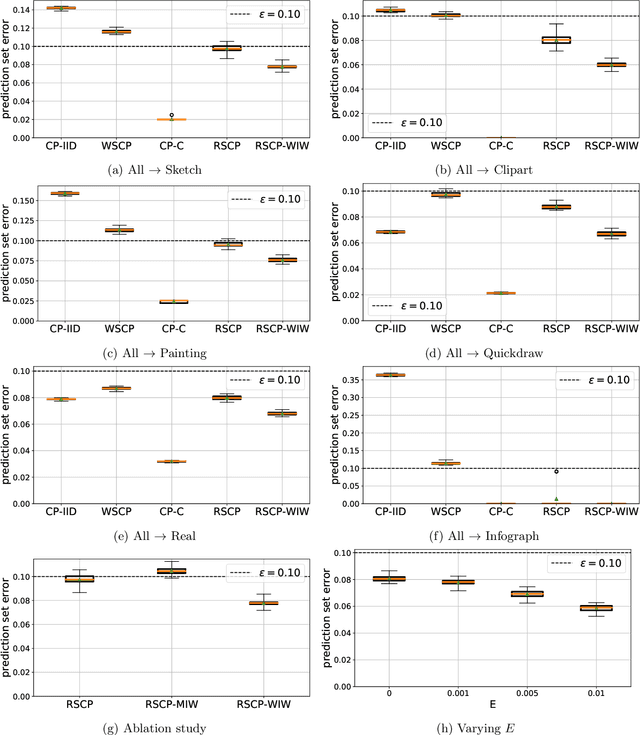


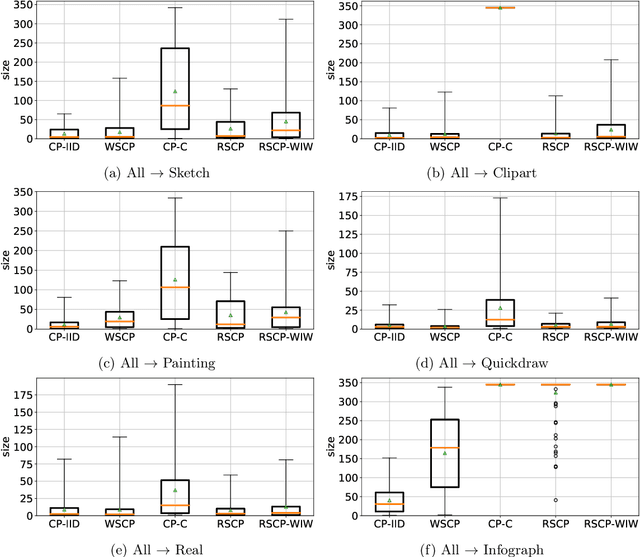
Abstract:An important challenge facing modern machine learning is how to rigorously quantify the uncertainty of model predictions. Conveying uncertainty is especially important when there are changes to the underlying data distribution that might invalidate the predictive model. Yet, most existing uncertainty quantification algorithms break down in the presence of such shifts. We propose a novel approach that addresses this challenge by constructing \emph{probably approximately correct (PAC)} prediction sets in the presence of covariate shift. Our approach focuses on the setting where there is a covariate shift from the source distribution (where we have labeled training examples) to the target distribution (for which we want to quantify uncertainty). Our algorithm assumes given importance weights that encode how the probabilities of the training examples change under the covariate shift. In practice, importance weights typically need to be estimated; thus, we extend our algorithm to the setting where we are given confidence intervals for the importance weights rather than their true value. We demonstrate the effectiveness of our approach on various covariate shifts designed based on the DomainNet and ImageNet datasets.
Group-Sparse Matrix Factorization for Transfer Learning of Word Embeddings
Apr 18, 2021
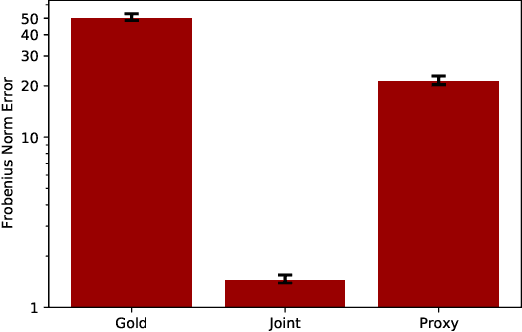
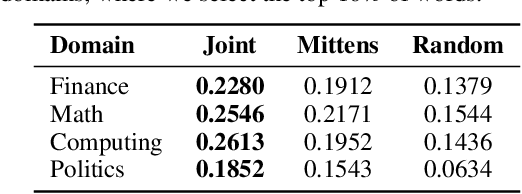
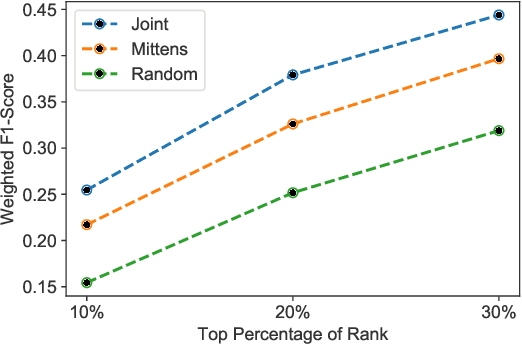
Abstract:Sparse regression has recently been applied to enable transfer learning from very limited data. We study an extension of this approach to unsupervised learning -- in particular, learning word embeddings from unstructured text corpora using low-rank matrix factorization. Intuitively, when transferring word embeddings to a new domain, we expect that the embeddings change for only a small number of words -- e.g., the ones with novel meanings in that domain. We propose a novel group-sparse penalty that exploits this sparsity to perform transfer learning when there is very little text data available in the target domain -- e.g., a single article of text. We prove generalization bounds for our algorithm. Furthermore, we empirically evaluate its effectiveness, both in terms of prediction accuracy in downstream tasks as well as the interpretability of the results.
Program Synthesis Guided Reinforcement Learning
Feb 22, 2021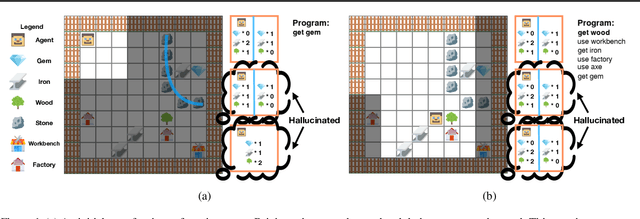


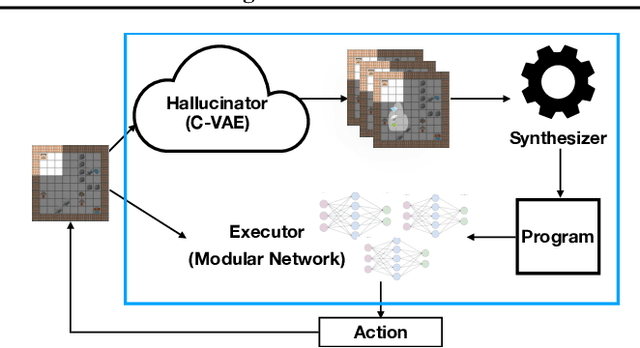
Abstract:A key challenge for reinforcement learning is solving long-horizon planning and control problems. Recent work has proposed leveraging programs to help guide the learning algorithm in these settings. However, these approaches impose a high manual burden on the user since they must provide a guiding program for every new task they seek to achieve. We propose an approach that leverages program synthesis to automatically generate the guiding program. A key challenge is how to handle partially observable environments. We propose model predictive program synthesis, which trains a generative model to predict the unobserved portions of the world, and then synthesizes a program based on samples from this model in a way that is robust to its uncertainty. We evaluate our approach on a set of challenging benchmarks, including a 2D Minecraft-inspired ``craft'' environment where the agent must perform a complex sequence of subtasks to achieve its goal, a box-world environment that requires abstract reasoning, and a variant of the craft environment where the agent is a MuJoCo Ant. Our approach significantly outperforms several baselines, and performs essentially as well as an oracle that is given an effective program.
Neurosymbolic Transformers for Multi-Agent Communication
Jan 05, 2021



Abstract:We study the problem of inferring communication structures that can solve cooperative multi-agent planning problems while minimizing the amount of communication. We quantify the amount of communication as the maximum degree of the communication graph; this metric captures settings where agents have limited bandwidth. Minimizing communication is challenging due to the combinatorial nature of both the decision space and the objective; for instance, we cannot solve this problem by training neural networks using gradient descent. We propose a novel algorithm that synthesizes a control policy that combines a programmatic communication policy used to generate the communication graph with a transformer policy network used to choose actions. Our algorithm first trains the transformer policy, which implicitly generates a "soft" communication graph; then, it synthesizes a programmatic communication policy that "hardens" this graph, forming a neurosymbolic transformer. Our experiments demonstrate how our approach can synthesize policies that generate low-degree communication graphs while maintaining near-optimal performance.
Diverse Sampling for Normalizing Flow Based Trajectory Forecasting
Nov 30, 2020


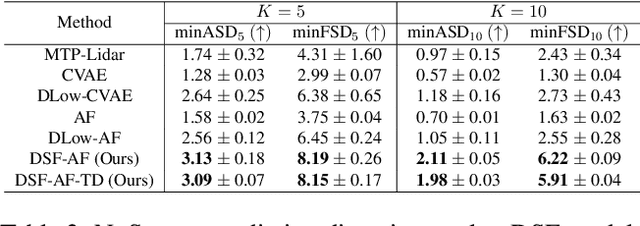
Abstract:For autonomous cars to drive safely and effectively, they must anticipate the stochastic future trajectories of other agents in the scene, such as pedestrians and other cars. Forecasting such complex multi-modal distributions requires powerful probabilistic approaches. Normalizing flows have recently emerged as an attractive tool to model such distributions. However, when generating trajectory predictions from a flow model, a key drawback is that independent samples often do not adequately capture all the modes in the underlying distribution. We propose Diversity Sampling for Flow (DSF), a method for improving the quality and the diversity of trajectory samples from a pre-trained flow model. Rather than producing individual samples, DSF produces a set of trajectories in one shot. Given a pre-trained forecasting flow model, we train DSF using gradients from the model, to optimize an objective function that rewards high likelihood for individual trajectories in the predicted set, together with high spatial separation between trajectories. DSF is easy to implement, and we show that it offers a simple plug-in improvement for several existing flow-based forecasting models, achieving state-of-art results on two challenging vehicle and pedestrian forecasting benchmarks.
 Add to Chrome
Add to Chrome Add to Firefox
Add to Firefox Add to Edge
Add to Edge